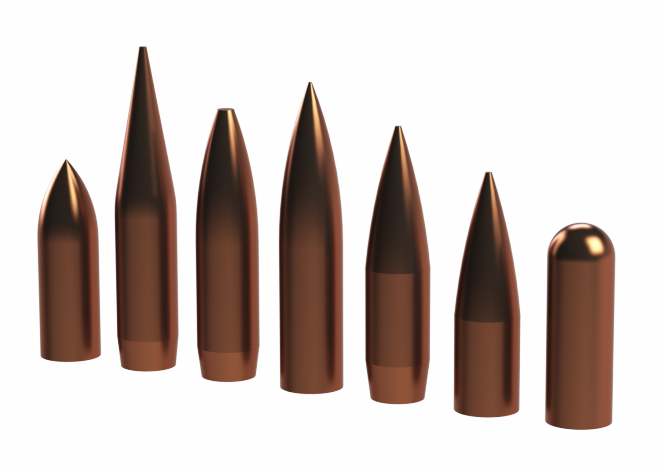In the second installment of Ballistics 101, we took a look at the concept of a “ballistic coefficient”, or a drag model based on an empirically tested projectile, against which other projectiles can be measured and compared. Mentioned in that post – but not explained – was the concept of form factor, which is the subject of today’s installment.
If ballistic coefficient indicates how well a given projectile resists drag when compared to the model projectile, form factor indicates how much more or less aerodynamic that projectile’s shape is than the model projectile’s. The important difference between the two is that form factor exists irrespective of sectional density (SD). Form factor does not tell you how well a projectile resists air drag, but it does indicate how efficient a projectile with that shape and of a given sectional density will be. It’s important to note that form factors are specific to their respective ballistic coefficients; we’ll see why in a minute.
Let’s take an example. The 147gr bullet of 7.62mm M80 Ball has a ballistic coefficient of approximately 0.200 G7. We can calculate its sectional density using the common formula of bullet weight / (projectile diameter)^2 / 7000:
147 gr / (0.308 in)^2 / 7000 gr/lb = 0.221 lb/in^2
Now the G7 ballistic coefficient and the i7 form factor* are related, but the i7 form factor exists without respect to the sectional density, whereas SD is a factor in calculating ballistic coefficient. This means to get the form factor of this bullet, we need to divide the projectile’s sectional density by its G7 BC:
0.221 lb/in^2 SD / 0.200 G7 BC = 1.105 i7 FF
So what is form factor useful for? Well, if you have two bullets of the same shape but difference sizes and/or weights, and you know the ballistic coefficient of one, you can calculate the ballistic coefficient of the other. For example, let’s say we took that 147 gr M80 bullet above, and made one just like it on our lathe, but out of aluminum instead. What would its G7 ballistic coefficient be?
First, we weigh the new bullet and the scale reads 40 grains. Now, we calculate sectional density:
40 gr / (0.308 in)^2 / 7000 gr/lb = 0.060 lb/in^2
We can divide that sectional density by the i7 FF for M80 shown above to derive the G7 BC of the new aluminum bullet:
0.060 lb/in^2 SD / 1.105 i7 FF = 0.055 G7 BC
Wow, that BC is really low! Maybe the new bullet would make a good short-range training round?
*Standard form factor nomenclature is the same as for ballistic coefficients, except with a lower case “i” instead of the upper case “G”; e.g. “a 0.228 G8 BC and 0.95 i8 FF.”
 Your Privacy Choices
Your Privacy Choices
